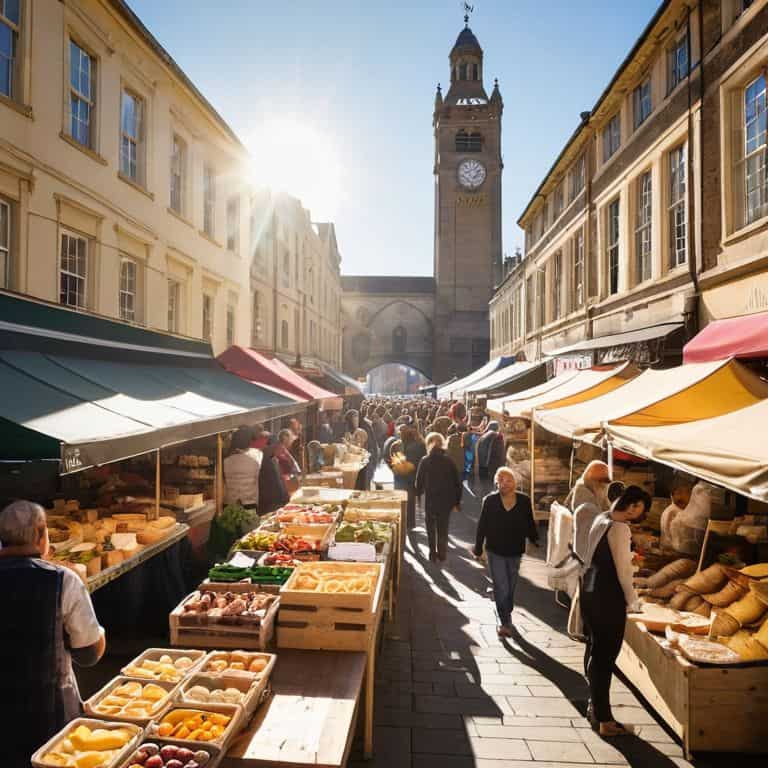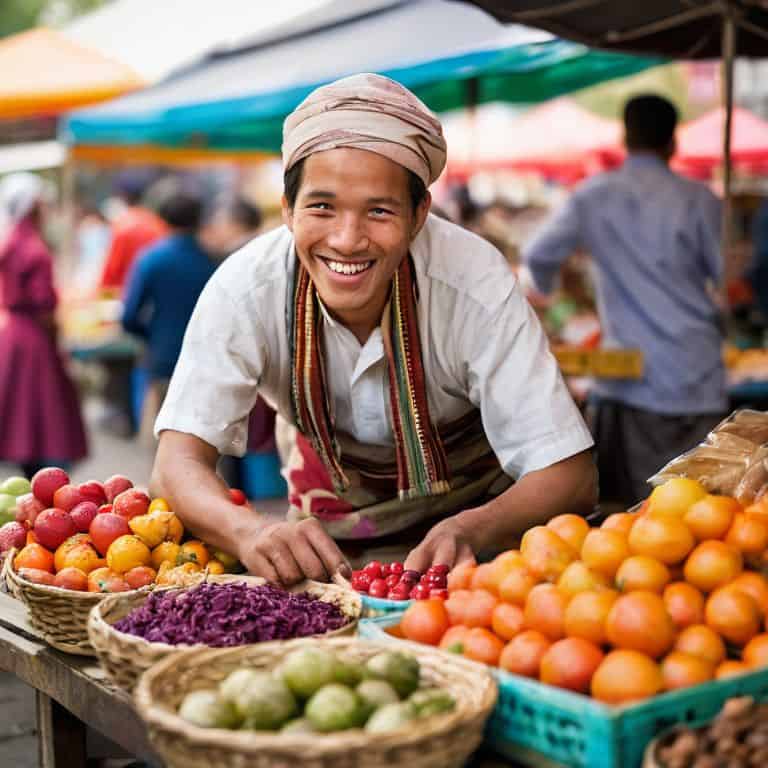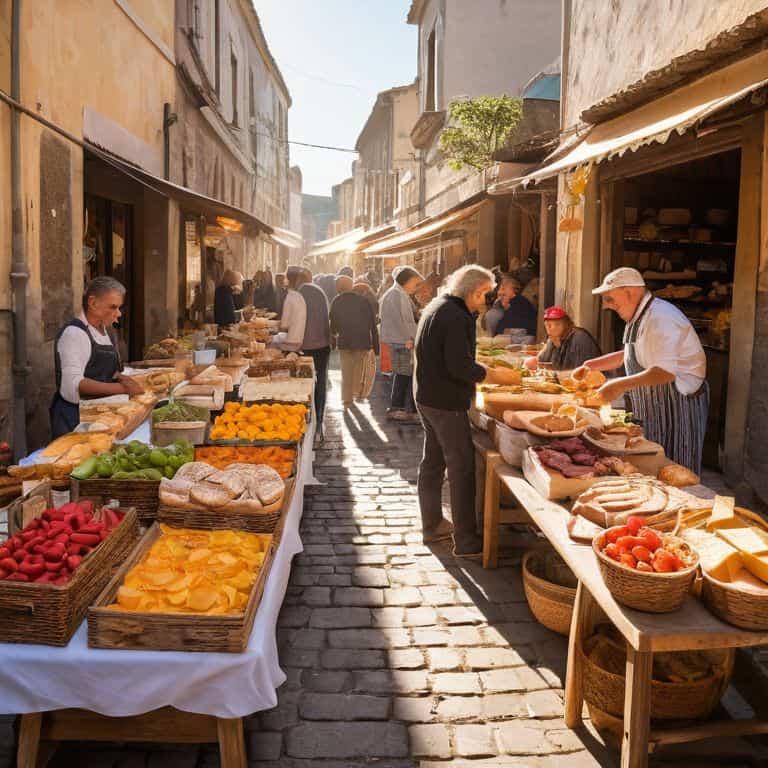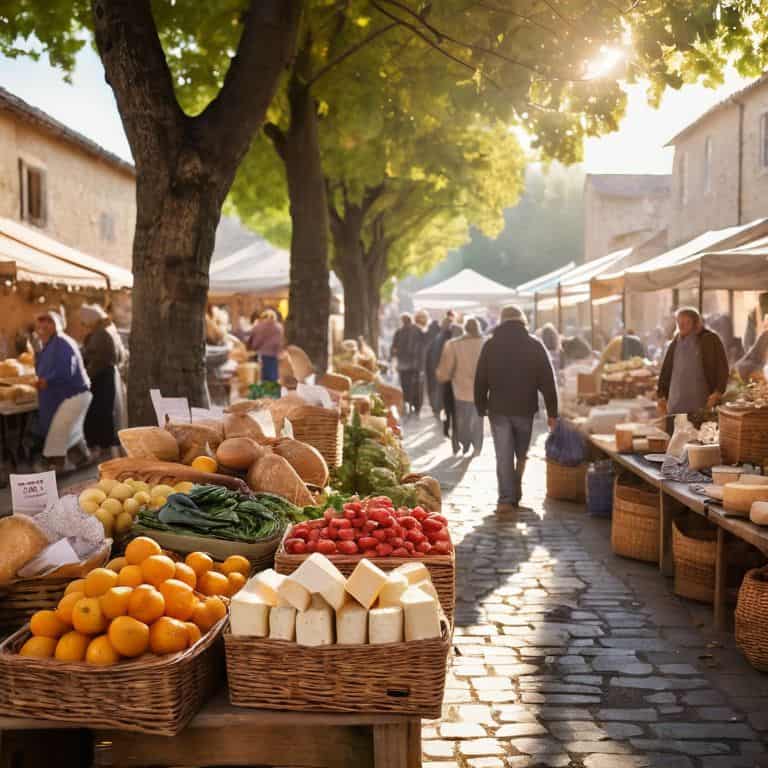I still remember the first time I stumbled upon a local food market in a small town in Italy – the sights, smells, and tastes were overwhelming, yet exhilarating. As I wandered through the stalls, I realized that there’s no better way to experience the culture of a place than by diving headfirst into its food markets. But, I’ve often found that many travelers struggle with how to use food markets like a local, instead of just visiting them as a tourist. They’re often unsure of how to navigate the stalls, what to try, and how to truly immerse themselves in the local culture.
As someone who’s spent years exploring food markets around the world, I want to share my honest, no-hype advice on how to use food markets like a local. In this article, I’ll take you through the practical tips and tricks I’ve learned along the way, from how to choose the best stalls to how to engage with the vendors and truly experience the local cuisine. My goal is to help you move beyond the surface level of food markets and discover the hidden gems that only reveal themselves to those who are willing to venture off the beaten path. By the end of this guide, you’ll be equipped with the knowledge and confidence to explore food markets like a native, not just a navigator.
Table of Contents
Guide Overview: What You'll Need

Total Time: 2 hours
Estimated Cost: $0 – $20
Difficulty Level: Easy
Tools Required
- Reusable Shopping Bag (to carry purchases)
Supplies & Materials
- Local Currency for market transactions
- Water Bottle to stay hydrated while shopping
Step-by-Step Instructions
- 1. First, immerse yourself in the local culture by researching the market beforehand – not just the layout and the vendors, but the history and the stories behind it. I find that reading old cookbooks, talking to locals, and scouring through library archives gives me a deeper understanding of the place and its people. This way, when you finally step into the market, you’re not just a tourist, you’re a participant in a long-standing tradition.
- 2. Upon arrival, take your time to soak in the atmosphere – the sounds, the smells, the sights. Don’t rush to buy anything just yet; instead, wander around, observe how the locals interact with each other and the vendors, and notice the different types of produce and products on display. This initial reconnaissance will help you identify the most authentic and unique offerings.
- 3. Next, engage with the vendors. Don’t be afraid to ask questions, share your own stories, or simply listen to theirs. In my experience, the vendors are often the guardians of local traditions and are more than happy to share their knowledge with genuinely interested visitors. This not only enriches your experience but also helps to build a connection with the community.
- 4. When it’s time to make a purchase, be mindful of the seasons. Buying produce that’s in season not only ensures that it’s fresher and tastes better, but it also supports the local economy and reduces your carbon footprint. Ask the vendors about what’s in season, and let their recommendations guide your shopping.
- 5. To truly experience the market like a local, learn a few key phrases in the local language. Simple greetings, questions like “How much?” or “What’s this?”, and expressions of gratitude can go a long way in breaking the ice and making your interactions more meaningful. It’s not about being fluent; it’s about showing respect and a willingness to connect.
- 6. As you shop, pay attention to the prices, but don’t immediately reach for your wallet. Observe how the locals haggle, and when it’s appropriate, join in. In many cultures, haggling is not just about getting a good deal; it’s a social ritual that builds rapport between buyer and seller. Remember, it’s all about the interaction, not just the transaction.
- 7. Finally, indulge in the local delicacies. Whether it’s fresh fruit, baked goods, or street food, make sure to taste the local specialties. This is where the real magic happens – the flavors, the textures, the aromas all combine to create an unforgettable experience. And don’t forget to share your own food stories; there’s no better way to connect with people than over a shared love of food.
Navigating Local Food Scenes

As I wander through the vibrant stalls of a local market, I’m reminded that cultural immersion through cuisine is just as much about the people as it is about the food. To truly navigate local food scenes, you need to be willing to engage with the vendors, ask questions, and learn about the stories behind the dishes. Authentic eating experiences abroad are often the result of these chance encounters, where a simple conversation can lead to a lifelong memory.
When it comes to food market tours for beginners, I always advise starting with the basics: local food shopping tips like knowing what’s in season, how to haggle (if necessary), and what to avoid. Understanding market etiquette is also crucial, as it can vary greatly from one culture to another. By being mindful of these nuances, you can ensure a more enjoyable and respectful experience for both yourself and the vendors.
As you delve deeper into the local food scene, you’ll begin to appreciate the rich tapestry of flavors and traditions that exist within each market. From the spices and ingredients used in traditional dishes to the ways in which food brings people together, navigating local food scenes is an journey that requires patience, curiosity, and a willingness to immerse yourself in the unknown. By embracing this mindset, you’ll find that the true essence of a place lies not in its landmarks, but in the everyday moments and interactions that make travel so rewarding.
Cultural Immersion Through Cuisine
As I wander through the vibrant stalls, I’m reminded that cultural immersion is not just about tasting the local cuisine, but about understanding the stories and traditions behind each dish. Every ingredient, every cooking technique, and every presentation holds a secret to the community’s history and values. By embracing the local food, I’m not just nourishing my body, but also connecting with the people and their heritage. The aroma of freshly baked bread, the sound of sizzling meats, and the sight of colorful spices all blend together to create an sensory experience that transcends mere sightseeing.
In this culinary journey, I’ve found that the most profound moments of connection come from sharing meals with locals, listening to their tales, and learning about the significance of each recipe. It’s in these intimate moments that the true essence of a place is revealed, and the boundaries between traveler and local begin to blur.
Unwrapping Flavors of the City
As I wander through the city’s food markets, I’m struck by the symphony of flavors that unfold before me. The pungent aroma of freshly brewed coffee mingles with the sweetness of ripe mangoes, while the sound of sizzling street food fills the air. It’s here, among the vibrant stalls and bustling crowds, that I discover the true essence of the city. I let my senses guide me, sampling local delicacies and chatting with vendors who share stories of their craft. With each bite and each conversation, the city’s flavors begin to unravel, revealing a rich tapestry of traditions and cultures.
Market Whispers: 5 Secrets to Unleashing Your Inner Local
- Dive into the unknown: don’t be afraid to try unfamiliar fruits, vegetables, and spices – it’s the best way to discover hidden gems and surprise your taste buds
- Listen to the rhythm of the market: pay attention to the sounds, the chatter, and the body language of the vendors and shoppers – it’s a symphony that will guide you through the stalls
- Get lost in the aisles: forget about your shopping list and let the sights and smells guide you – you might stumble upon a rare ingredient or a family recipe that’s been passed down through generations
- Speak the language of food: learn a few key phrases in the local language, like ‘what’s fresh today?’ or ‘can you recommend something?’, to connect with the vendors and get insider tips
- Follow the locals: observe what the locals are buying and eating, and don’t be shy to ask for recommendations – they’ll point you to the best stalls, the freshest produce, and the most authentic eats
Embracing the Essence of Local Food Markets
By immersing yourself in the local food scene, you’ll discover that every vendor, every dish, and every ingredient tells a story of the place’s history, culture, and people
Learning to navigate these markets like a native means tuning your senses to the rhythms of local life – the early morning bustle, the lunchtime rush, and the evening gatherings
Ultimately, the true magic of using food markets like a local lies not in the food itself, but in the connections you make, the traditions you uncover, and the memories you create along the way
The Heart of the Market
To truly use food markets like a local, you must abandon the notion of being a spectator and embrace the role of a participant – let the vendors’ calls become your soundtrack, the aromas your guide, and the flavors your passport to the authentic soul of a place.
Anika Sharma
Embracing the Flavors of the World

As I reflect on my journeys through the world’s food markets, I’m reminded that the true essence of a place lies in its unbridled flavors and the people who bring them to life. By following the steps outlined in this guide, you’ll be well on your way to immersive cultural experiences that transcend the typical tourist trail. From navigating local food scenes to unwrapping the flavors of the city, every moment is an opportunity to connect with the soul of a place. Whether you’re a seasoned traveler or just starting to explore, the key is to approach each market with a sense of curiosity and wonder, allowing the sights, sounds, and aromas to guide you.
As you embark on your own culinary adventures, remember that the beauty of food markets lies not just in the food itself, but in the stories and traditions that surround it. So, take a deep breath, let the flavors envelop you, and allow yourself to become a part of the vibrant tapestry that is local cuisine. For in the end, it’s not just about the food – it’s about the people, the culture, and the memories that linger long after the meal is finished. And that, my friends, is the greatest ingredient of all.
Frequently Asked Questions
What are some common etiquette rules I should know when shopping at local food markets in foreign countries?
When navigating foreign food markets, I’ve found that a little respect goes a long way – learn a few key phrases like ‘hello’ and ‘thank you’, don’t touch produce before buying, and always haggle with a smile, it’s a dance, not a fight.
How can I effectively communicate with vendors at food markets if I don't speak the local language?
I’ve found that a warm smile and genuine curiosity can go a long way, even without a common language. I learn a few key phrases like “how much?” and “what’s this?” in the local tongue, and vendors often appreciate the effort. Gestures, too, can be universal – pointing to a dish, raising an eyebrow in inquiry, or simply enjoying a sample can spark a connection.
Are there any specific local ingredients or dishes that I should try to experience the authentic flavors of the city?
Absolutely, dive into the local specialties like freshly baked khachapuri, rich with egg and butter, or sample the spicy kick of tkemali, a sour plum sauce that elevates any dish. Let the aromas of sizzling khinkali, those dumplings filled with spiced meat and herbs, guide you through the market stalls, and don’t miss the chance to taste the sweetness of freshly picked churchkhela, a grape juice and nut candy.
